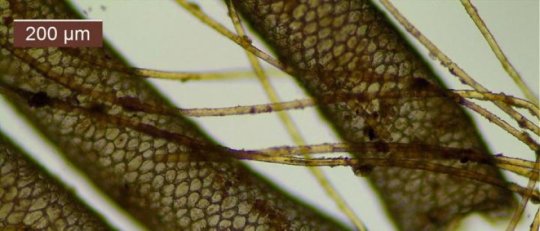[ad_1]
The doctoral dissertation of Tuija Kirkinen, MA, examines the use and significance of furs in Finland and the region of Karelia surrendered to the Soviet Union. Furs were commonly used in burials in southern Finland until the 14th and 15th century, and in northern Finland as late as the 17th century. The most prevalent group of skins are those of large mammals, which were wrapped around the deceased. In cremation, bear skins were particularly popular, while Finnish forest reindeer and elk skin were commonly used in burials.
Clothes and objects were also manufactured from fur; a knife sheath could be covered or lined with fur.
Finland’s oldest goat observation dates back to the Stone Age
As research material, Kirkinen used hair and fur remains found in burial sites, as well as predator claws which had been attached to the skins.
“Contrary to initial assumptions, quite a lot of fur remains have been preserved in graves.”
Animal hairs have been identified by their structure with the help of a microscope. Exceptionally, microscopically small hairs have been preserved in connection with other objects and even in the soil of a burial site dating back to the Stone Age (2800-2300 BCE). This finding, made in Perttulanmäki, Kauhava, western Finland, turned out to be Finland’s oldest goat finding. As a result, Kirkinen’s research provides recommendations for the handling of potential fibre material at archaeological excavations.
According to Kirkinen, Finland has presumably been situated at the intersection of two fur and bear traditions, one based in the west, the other in the east and north. Deer hunted for their meat stand out from the dataset, an aspect where Finnish data clearly differs from material found across Scandinavia. Fewer products made of mustelids and other more typical fur animals have been found, which makes Kirkinen think that fur use related to status was not very common in Finland and the Karelian Peninsula.
The treatment of prey speaks of respect
Archaeological basic research increases our understanding of the past. The research carried out by Tuija Kirkinen opens perspectives on the relationship between humans and animals, particularly animals that serve as the origin of products used by humans.
“Wrapping bodies in fur is a tradition born already among hunting cultures. The continuation of this tradition all the way to early recorded history and, in Lapland, up to the 17th century, speaks of the preservation of a spiritual culture connected with hunting.”
Wrapping the deceased in fur made it possible for them to join their ancestors, making the boundary between humans and animals less clear-cut than today. Ethnographic datasets also contain examples of narratives on how fur had to be handled with respect when sewing, or the animals would no longer give their skins up for humans to use.
“This is a distinct difference from modern fur farming,” Kirkinen points out.
Grave archaeology has proven that traditions relating to hunting maintained a central role in communities otherwise dominated by agriculture. This is proof of the continued significance of hunting, both in terms of economics and culture.
Further information: https://helda.helsinki.fi/handle/10138/299558
Story Source:
Materials provided by University of Helsinki. Note: Content may be edited for style and length.
[ad_2]















